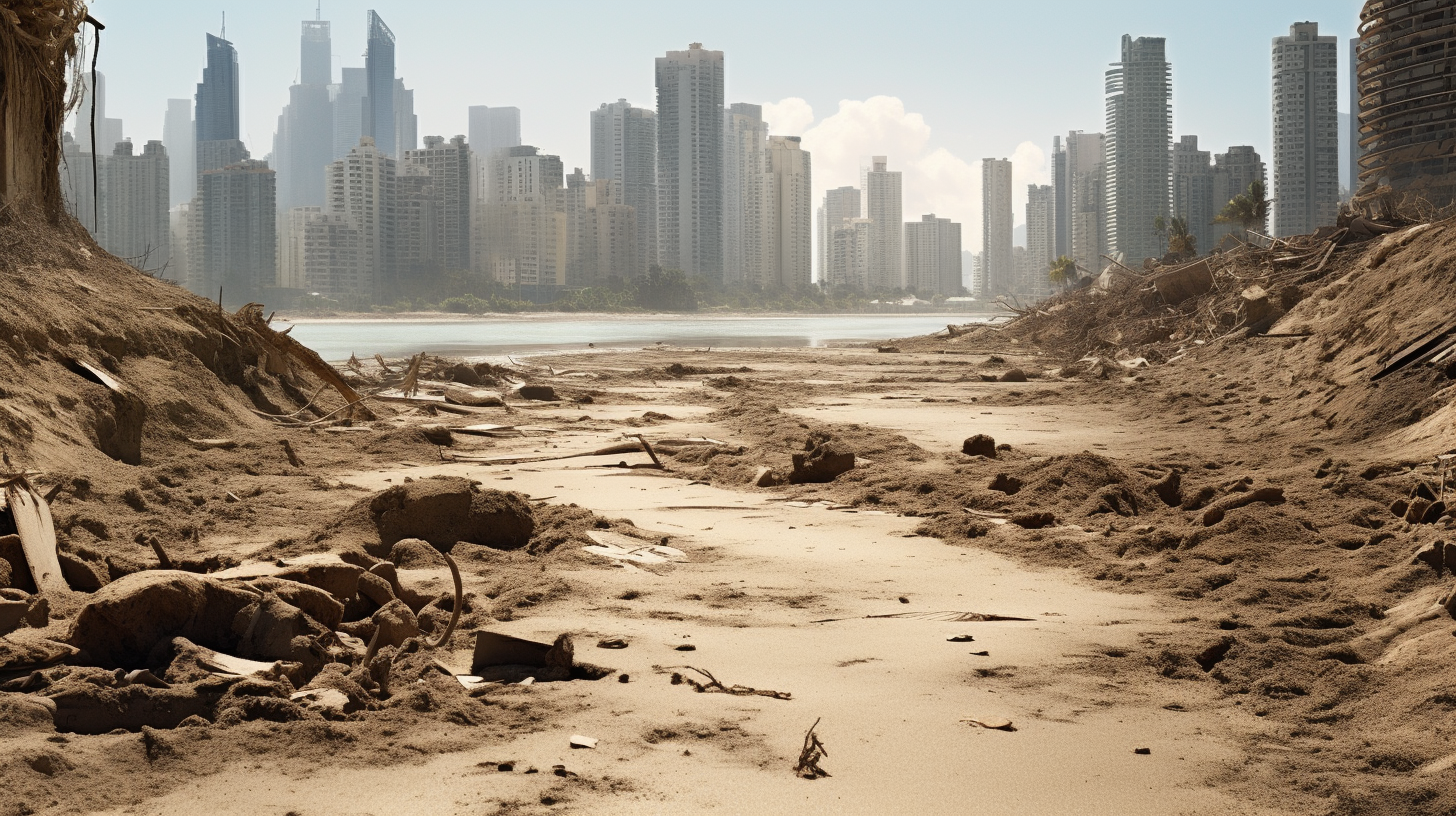The relentless march of urban development has long been hailed as a testament to human ingenuity and resilience. Yet, in its wake, it leaves a litany of ecological casualties – none so profound as the union of city and sand. In our latest exploration into the dystopian landscapes of our current era, we unravel the tale of urban spread: a harmonious conqueror that in its pursuit of the horizon, straddles atop the carcasses of nature’s once bountiful terrains.
Imagine, if you will, metropolises spread on the remnants of forests and wetlands, their skyscrapers casting long shadows over dunes that once teemed with life. This is the stark metamorphosis of expanses including the Amazon Basin and the coastlines of Australia – an astonishing twist of fate where concrete fortresses usurp natural ones. The cities, ever voracious in their expansion, devour everything in their path, leaving behind them sprawling urban jungles that believe in neither surrender nor ceasefire.
As we witness the historic encroachment of the Sahara into Sub-Saharan Africa, reflection is mandated on the hubris that drives civilization to the point where even desert mirages are not immune. Cairo, a city that reveres its pharaonic ancestry, now finds that its survival is bound to the ceaseless sands it had once commanded and conquering.
Indulge in the sober recount of Beijing’s conundrum: once a fortress against the Mongolian winds, now a playground for the very dust storms it defied, as documented in our previous piece, ‘Rise of the Dust: New Deserts Swallow Sprawling Cities’. Regard also the plight of Las Vegas, a city betrayed by its mirage, encapsulated in our previous article ‘Deserts Once Called Home’. Here, we see the transition from oasis to wasteland, a cruel irony for a city built on dreams and now residing in a dust-choked nightmare.
The act of urbanization has become a paradoxical duality of destruction and creation – on one end, we face the extinction of irreplaceable ecologies; on the other, a testimony to the human spirit. Architectural behemoths that claw at the heavens are erected upon the graveyards of ecosystems. It is in this macabre feat that we find communities forced to adapt – or perish. Testament arises from the labyrinthine slums that spiral out, crafted from the desperation of people clinging to the fringes of society, mere shadows to their former selves. We engage with their stories not just to lament but to etch their struggles as cautionary tales into the zeitgeist of our times.
To transpose the gravity of the situation, experts voice their trepidations over the potential aquifer depletion – a cataclysm waiting in the depths. Urban growth demands voracious water consumption, creating a thirst the earth cannot quench. It is not hyperbole then to evoke the image of future cities as titanic maws, relentlessly draining the planet’s lifeblood. In the meantime, suburban sprawl continues unabated, a ‘growth for the sake of growth’ motif echoing the malignant spread of a cancerous blight.
The narrative we weave is not of one city, nor a single desert. It is the saga of unbound human aspiration, a relentless forward charge that pivots on the axis of environmental neglect. These are the sagas of urban sprawls that do not retreat from the encroaching sands but integrate them, constructing a tomorrow predicated on the burial of nature’s yesterday.
Let us pen the future-vision of tomorrow’s child, wandering amid the remnants of what was once verdant, now a tapestry of steel, glass, and desolation. Forget not the lessons woven into this tale, for as we look upon the horizon where nature fades and urban sprawl reigns, we see the future not as we dreamt, but as we constructed – on shaky sands, birthing cities that gasp for air.
